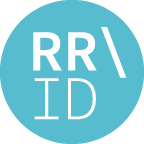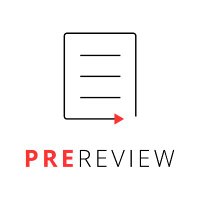Excess HIV infections and costs associated with reductions in HIV prevention services in the United States: Projection using real-world data
This article has been Reviewed by the following groups
Discuss this preprint
Start a discussion What are Sciety discussions?Listed in
- Evaluated articles (PREreview)
- Evaluated articles (Rapid Reviews Infectious Diseases)
Abstract
Importance
Pre-exposure prophylaxis (PrEP) is a proven effective intervention to reduce risk for HIV infection, but changes in policies that lead to increased out of pocket PrEP costs or that decrease access to convenient PrEP locations could reduce PrEP coverage, resulting in excess HIV infections and costs.
Objective
To estimate the impacts of federal policy changes on PrEP coverage, new HIV infections and costs associated with new HIV infections
Design
Estimation of excess HIV infections under different policy impacts were conducted using parameters from a previously published ecological model of the relationship between PrEP coverage and new HIV infections. Costs were estimated for the treatment of infections not averted under different scenarios.
Setting
United States
Participants
There was no individual participation in research activities; population-based data sources were used to describe the population-level PrEP use and new diagnoses under different hypothetical changes in PrEP coverage.
Exposures
Percent of people with indications for PrEP who are taking PrEP
Main Outcome and Measures
Estimated change in new HIV infections under different assumptions of change in PrEP coverage; costs of treatment for avoidable HIV infections and net costs of avoidable infections after accounting for costs of PrEP medications.
Results
Even modest reductions in PrEP coverage would result in thousands of avoidable HIV infections. An absolute 3.3% annual reduction in PrEP coverage over the next decade would result in 8,618 avoidable HIV infections, with lifetime medical costs of over $3.6 billion (discounted) for treatment of the unaverted HIV infections.
Conclusions and Relevance
Changes in policy that reduce PrEP uptake would result in avoidable HIV infections and increased costs for HIV treatment. Maintaining policies and programs that support PrEP uptake offers benefits for health and is estimated to result in net cost savings.
Key points
Question
What are the likely impacts on HIV transmissions and healthcare costs if policy changes result in decreased PrEP utilization in the United States?
Findings
Under assumptions of even modest reductions in PrEP use, we estimated thousands of HIV infections would fail to be averted over the next decade, and billions of dollars of additional treatment costs would accrue to the healthcare system.
Results of the study
We used historical descriptive data on the US HIV epidemic to quantify the relationship between PrEP coverage and trends in HIV diagnoses and to estimate future trends in HIV infections if PrEP coverage were to be rolled back. If PrEP use declines modestly – about 3% annually – we estimate that 8,618 new infections would fail to be averted in a decade because of lowered PrEP uptake, and the estimated lifetime medical costs of these unaverted infections would be $3.6 billion (discounted) and $9.3 billion (undiscounted).
Meaning
Changes in healthcare priorities and policies, especially those that increase out of pocket costs of PrEP or reduce the convenience of engaging in PrEP care, risk rolling back our progress in ending the HIV epidemic, accruing avertable HIV infections, and incurring increased costs for medical care of people whose HIV infections were avoidable.
Article activity feed
-

-

-

This Zenodo record is a permanently preserved version of a PREreview. You can view the complete PREreview at https://prereview.org/reviews/15321030.
Summary:
The preprint "Excess HIV infections and costs associated with reductions in HIV prevention services in the United States: Projections using real-world-data" seeks to estimate the impact of decreasing PrEP coverage in the United States in response to looming funding cuts. PrEP (pre-exposure prophylaxis) is a highly effective way of reducing a person's risk of acquiring HIV.
The preprint builds on previously published work connecting ecological data on PrEP coverage to HIV diagnosis rates. The authors estimate that an annual reduction of 3.3% in PrEP coverage over the next decade would lead to 8,618 new HIV infections that would have otherwise been averted, incurring additional …
This Zenodo record is a permanently preserved version of a PREreview. You can view the complete PREreview at https://prereview.org/reviews/15321030.
Summary:
The preprint "Excess HIV infections and costs associated with reductions in HIV prevention services in the United States: Projections using real-world-data" seeks to estimate the impact of decreasing PrEP coverage in the United States in response to looming funding cuts. PrEP (pre-exposure prophylaxis) is a highly effective way of reducing a person's risk of acquiring HIV.
The preprint builds on previously published work connecting ecological data on PrEP coverage to HIV diagnosis rates. The authors estimate that an annual reduction of 3.3% in PrEP coverage over the next decade would lead to 8,618 new HIV infections that would have otherwise been averted, incurring additional lifetime medical costs of $3.6 billion (discounted) and $9.3 billion (undiscounted). Though there is significant uncertainty in this estimate, it is likely very conservative as the authors do not include secondary HIV infections arising from unaverted infections. The 3.3% annual decrease in coverage was chosen as a decrease of this size, over the next decade, would reverse the past decade's hard-won progress in PrEP coverage. This preprint's findings and message are urgent; its methods are robust enough to support its broader claim. It is publishable with few edits.
Major Issues
The preprint uses a regression model, with new HIV diagnoses as the outcome and an ecological measure of PrEP coverage as a continuous predictor. In adapting the model for this analysis, the authors assume that decreasing PrEP coverage would have an equal and opposite effect on HIV infection rates as increasing PrEP coverage. While consistent with the model, this assumption should be explicitly addressed in the discussion.
While this assumption introduces some bias into the model, the model provides relevant guideposts for what we can expect to see under a regime of decreased PrEP funding. The author's estimates are biased in a conservative way by their exclusion of secondary HIV cases arising from those who would otherwise not have been infected.
The preprint performs sensitivity analyses of PrEP coverage decreasing by 2% annually or by 10% annually, which are described as low- and high-impact scenarios. A clear justification of the rationale for selecting these values is needed.
Minor Issues
In Table 1, the title box stating, "HIV infections not averted" should be broadened, so as not to cut "infections".
Table 1 would benefit from a column indicating net-lifetime costs, as net-lifetime costs are more extensively discussed in the preprint than "net cost over 10 years".
Recommendations/Possible Extensions
The preprint may be strengthened by providing a conservative estimate of how much funding to PrEP related programs would need to be cut to arrive at a 3.3% annual reduction in coverage over the next decade.
Core to the author's argument is that decreasing funding for PrEP would lead to greatly increased human- and healthcare-cost. In Table 1, they present net-costs over a decade arising from unaverted cases due to decreasing PrEP coverage. The preprint would be strengthened by more strongly highlighting these net costs, as these estimates undermine any financial-efficiency argument for cutting funding to PrEP.
The point made in 2) could be supported further by including net-lifetime cost estimates in the preprint's analysis.
This preprint is published in direct and urgent response to funding cuts that would affect PrEP coverage and HIV prevention, including those to NIH, and CDC. While unusual, I believe that this preprint would benefit from a more explicit discussion of these funding cuts, as well as more extensive citations of news sources covering these developments. These may form an important part of contextualizing the preprint's research. (Examples may include What Does the Future Hold for the Ending the HIV Epidemic Initiative (EHE)?, KFF or Trump Administration Dialing Back Support for H.I.V. Prevention, NYTimes)
We agree that the preprint should be published as soon as possible, as part of a greater argument in defense of spending on PrEP and preventative measures more generally. While much energy should be directed towards preventing funding cuts, future work may estimate how best to apply more limited public or private funds for HIV prevention.
Competing interests
The authors declare that they have no competing interests.
-

